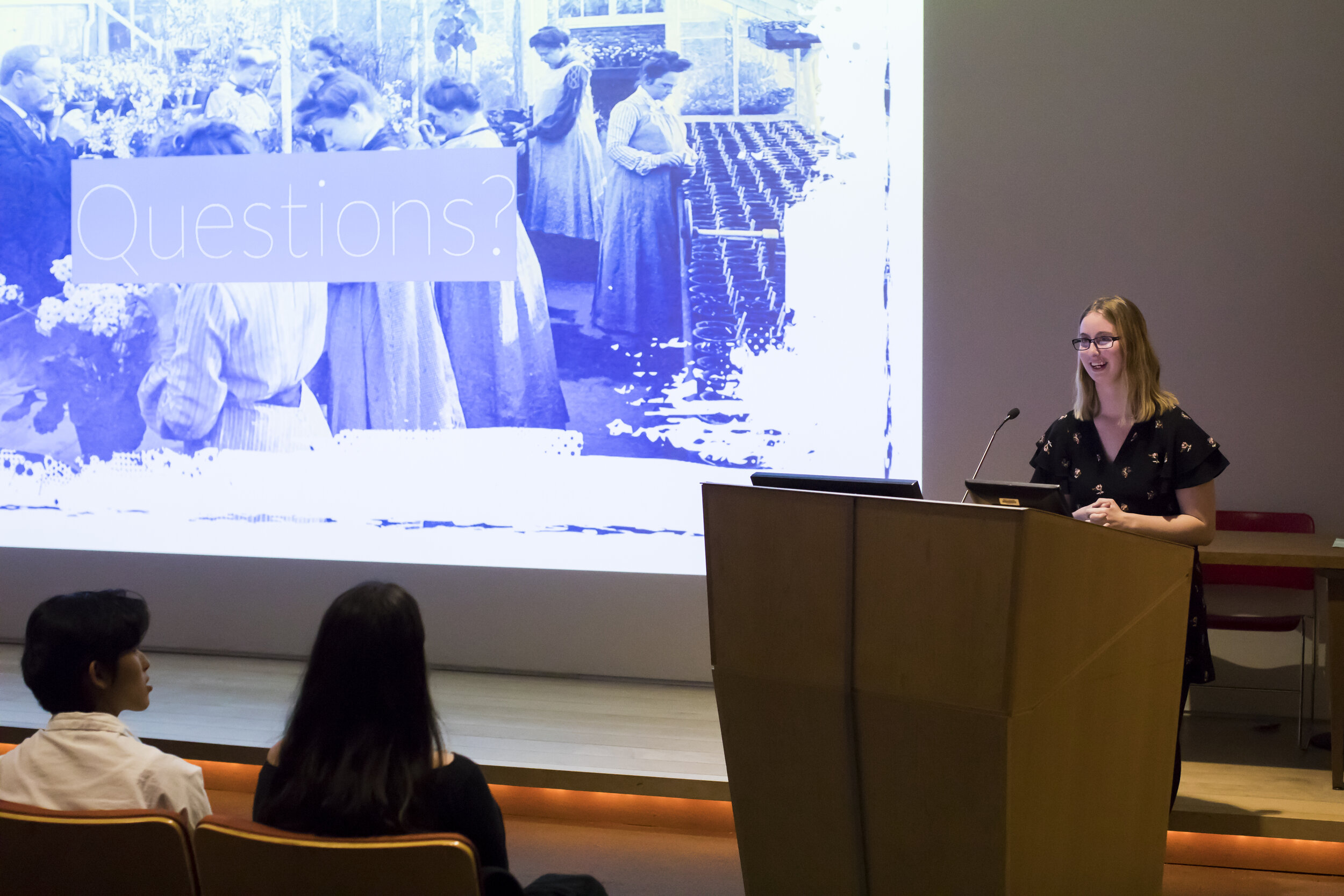
Hijacked Art
There are certain works of art that do not require a degree in Art History to recognize that they are iconic. Famous works included in the Western canon find themselves in our daily lives as textbook covers or as posters in the waiting rooms of doctor’s offices. Even watching the Simpsons results in a basic Art History education. Famous images from Art History have permeated every aspect of visual culture.
But this exhibition is more than just about the mere parody that the Simpsons display. Anyone can parody a work, these artists truly transform their inspirations to often turn them into activist symbols. In this exhibition, Hijacked Art, there are prints that echo American Gothic, Goya’s Los Caprichos, Piet Mondrian’s famous compositions, and Andy Warhol’s Campbell’s Soup Cans. Art is not created in a vacuum, as artists all have influences. More than just belonging to certain schools of art, this exhibition explores representations of the Western canon in contemporary art. The exhibition title is drawn from the fact that the contemporary artists in this show have interpreted the work of deceased artists who cannot condemn or laud the appropriation of their work. I was inspired to create this show after discovering the work of Enrique Chagoya, who practices what he calls “utopian cannibalism” and “reverse anthropology.” Chagoya flips the lens on European artists who appropriate sculptural and artistic forms from African and Pre-Columbian cultures. He “cannibalizes” works from the Western canon to critique European and American appropriation and misrepresentation of indigenous communities. Together, these prints show how artists can simultaneously reference iconic works and acknowledge the systems of oppression and repression they are tied to.
Hijacked Art
While the software for “Round Me” no longer exists, I have captured the history of the project through a screen recording of the previous website. This virtual walkthrough captures the images of the space and highlights the Marukami work’s individual links to a more detailed understanding of the work. See below for the opportunity to engage the work on a deeper level, for example, the breakdown of the Eric Avery and Munio Takahashi Makuuchi, as seen here using Genially’s software.
Photos taken for virtual rendering
Exhibition Checklist
Eric Avery
American (1948 - )
The Sleep of Reason from Behind, 1986
Linocut and screenprint printed in black and grey on medium thick, slightly textured, buff-colored paper (VI/X)
SC 2017.3
Francisco José de Goya y Lucientes
Spanish (1746 - 1828)
El sueño de la razón produce monstruos. (The sleep of reason produces monsters), Plate 43, Los Caprichos, 1799
Etching, burnished aquatint and drypoint printed in black on laid paper
SC 1964.34.43
Francisco José de Goya y Lucientes
Spanish (1746 - 1828)
No te escaparás. (You will not escape), Plate 72 from Los Caprichos, 1799
Etching and burnished aquatint printed in black on laid paper
SC 1964.34.72
Enrique Chagoya
American, born Mexico (1953 - )
Return to Goya No. 9, 2010
Etching on moderately thick, moderately textured, cream-colored paper
SC 2011.34
Piet Mondrian
Dutch (1872 - 1944)
Composition Rouge, Jaune, Bleu 1921 from Portfolio of Twelve Screenprints, 1957 published
Silkscreen printed in color on paper
SC 1978.56.69i
Enrique Chagoya,
American born Mexico (1953 - )
La Bestia’s Guide to the Birth of the Cool, 2014
Artist's Book; ten color lithograph with chine colle and gold metallic powder on handmade Amate paper, accordion book format
SC 2015.1
Jorge Yamilys Brito
Cuban (1972 - )
Homeland (Patria) from Poder: Power, 2010
Artist's Book; linocut and inkjet on medium weight smooth white paper
SC 2010.35.4.4
Enrique Chagoya
American born Mexico (1953 - )
Shark's Ink, Lyons, Colorado (published by)
Abenteuer der Kannibalen Bioethicists, 2001
Artist's Book; lithograph and woodcut with black, ochre, blue, yellow, and green ink, chine colle and collage on paper
SC 2002.9
Unknown
American 20th century
Turn On Your Loved Ones, 1967 or before
Screenprint in color on paper
SC 2011.38.113
Kara Elizabeth Walker
American (1969 - )
Harper’s Pictorial History of the Civil War (Annotated), Buzzard’s Roost Pass…, 2005
Offset lithography and screenprint on Somerset Textured paper
SC 2010.64.3
Munio Takahashi Makuuchi
American (1934 - 2000)
Whither Too?, ca. 1997
Drypoint printed in black on thick, moderately textured, white Arches paper
SC 2012.63.9
Donna Ruff
American, 20th Century
1.15.16, 2016
Hand cut deacidified newspaper
SC 2017.36
Guerrilla Girls
American 20th century
How to Enjoy the Battle of the Sexes (project for The New Yorker), from Guerrilla Girls, Most Wanted 1985 - 2006, 1996
Photo lithograph printed in color on paper
SC 2006.44.20
Guerrilla Girls
American 20th century
Do women have to be naked to get into the Met. Museum?, from Guerrilla Girls, Most Wanted 1985 - 2006, 1989
Photolithograph printed in color on paper
SC 2006.44.7


















